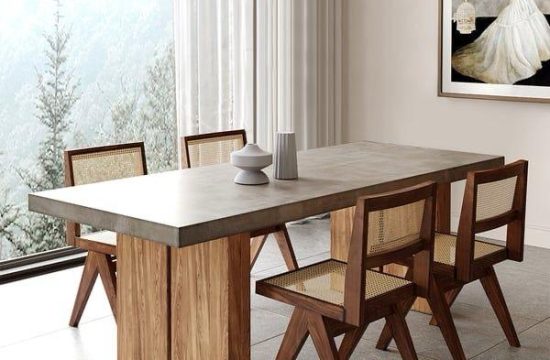ASHEVILLE – While North Carolina is famous for its furniture manufacturers, individual makers of fine handcrafted furniture are gaining recognition in Western North Carolina’s emerging craft economy.
Advertisement
The region has become a resource for the makers and for homeowners looking to add distinctive, one-of-a-kind furniture to their everyday lives.
One of the country’s best-known courses for would-be furniture maker-designers is Haywood Community College’s two-year professional crafts program in Clyde. Highly competitive, it admits only six students per year in each of four areas: clay, fiber, jewelry and wood.
And The Furniture Society, a national organization for makers, dealers and collectors, is based in Asheville. Its annual conference, open to the public, will be in Boone in June.
Furniture and craft
Paul Wanrooij was a project manager for a mail order company in Boone when he decided in 2001, at age 50, that corporate life no longer fit. “I always loved furniture and crafts and working with my hands,†he said, “but I didn’t have the time. My wife noticed I wasn’t really happy and said, ‘You should go back to school.’â€
A native of the Netherlands, Wanrooij (pronounced Wan-roy) flew to Portland, Ore., to look at a woodworking school. The school old him he was already down the road from one of the nation’s best woodworking programs.
Wanrooij studied at Haywood Community College for a year before establishing his own studio business. The program gave him skills and “the inspiration to do it,†he said. “The challenge, of course, comes after you leave school,†he said. “It takes persistence.â€
His persistence has paid off. Now based in Maine, Wanrooij sells via the Internet and in 12 galleries in the Northeast and California. His only outlet in the Southeast is Asheville’s Grovewood Gallery, where he was the best-selling new artist in 2004. Wanrooij’s modernistic Oceana end table recently won a 2016 Niche Award, given annually by Niche, the trade magazine for craft retailers, at the Philadelphia Buyers Market of American Craft.
Owning craft-made furniture
Wanrooij is one of more than 950 members of The Furniture Society, which promotes opportunities for studio furniture makers and helps educate the public about buying and owning craft-made furniture. David Edgar, the group’s executive director, said a custom-made piece may be initially more expensive than factory-made furniture, but its longevity makes it economical in the long run.
“If you buy a handcrafted table,†he said, “you’re not buying particle board covered with plastic laminate or wood veneer. It may last your lifetime, but you won’t have your offspring squabbling over it. These are things that are going to be showing up at future generations of the ‘Antiques Roadshow.’â€
There are intangibles as well to owning craft furniture. Each piece has its own story that becomes part of your family’s story.
“If you select something made by an individual artist,†Edgar said, “you’re buying something that’s not identical to anything else. Our members may make something to the same design, but no two pieces are ever exactly alike. You establish a relationship with the maker that goes beyond meeting a salesperson in a showroom. You’re buying a signed work of art.â€
Handcrafting also allows a piece to be customized. Don’t like maple? That cabinet can be made in cherry.
Edgar said a buyer who was 6 feet foot, 2inches tall liked a chair made by one of his members recently but felt it was a little too low. “The maker can measure you for a chair, like a tailor would measure you for a suit of clothes,†he said.
Besides adapting an existing design, a maker can create something specifically for your needs and taste. “The maker can come look at your house,†Edgar said, “and be inspired by the way you live.â€
Inspired purchase
Ginger McKnight, of Fort Mill, S.C., was inspired when she saw Wanrooij’s award-winning Oceana table at Grovewood Gallery while she and her husband, Walker, were here on a visit. “The design is gorgeous,†she said. “The curving legs and the different color inlay on the inside of the curve makes it such a conversation piece.â€
Her husband bought the table for her for their anniversary.
It was her second piece of handcrafted furniture. Her husband also bought her a rocking chair at Grovewood for Christmas. The rocking chair, made by Joe Godfrey, of Forest City, “was a surprise,†she said, “The table was not.â€
Asheville writer Arnold Wengrow is a contributing editor of Theatre Design and Technology magazine.
source : www.citizen-times.com












